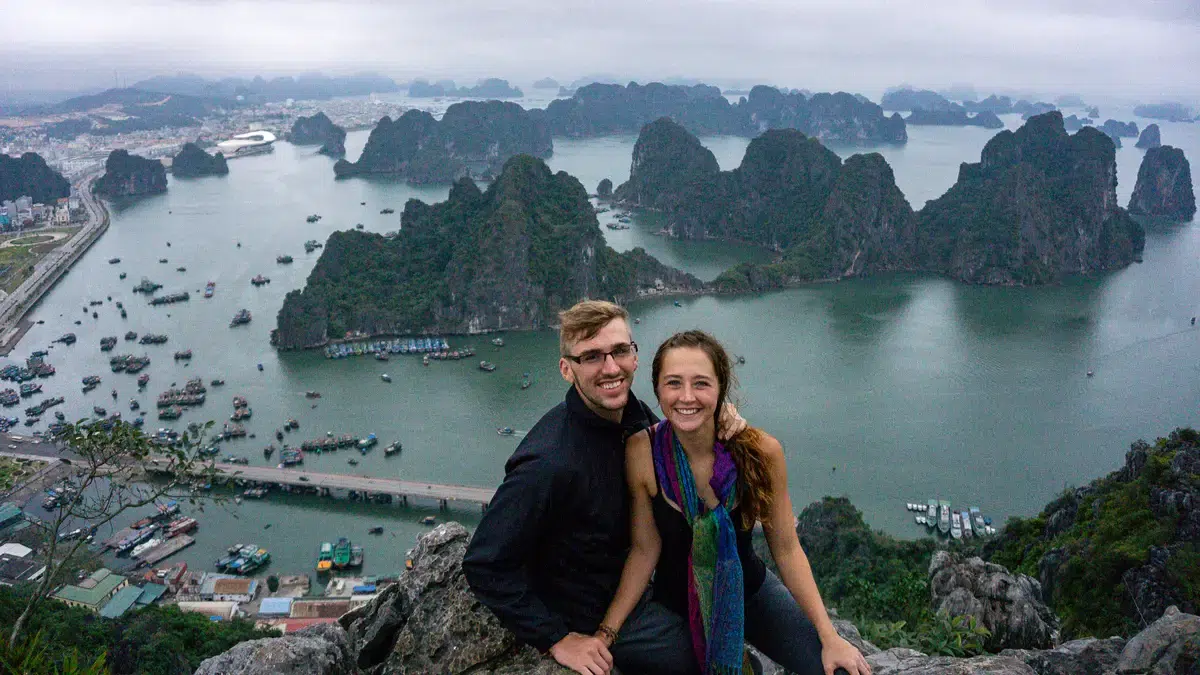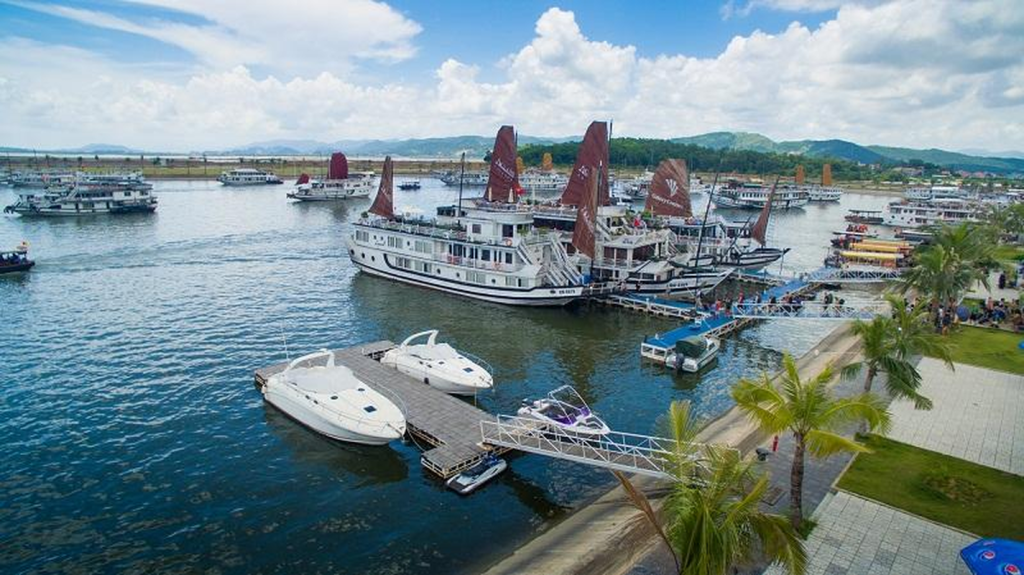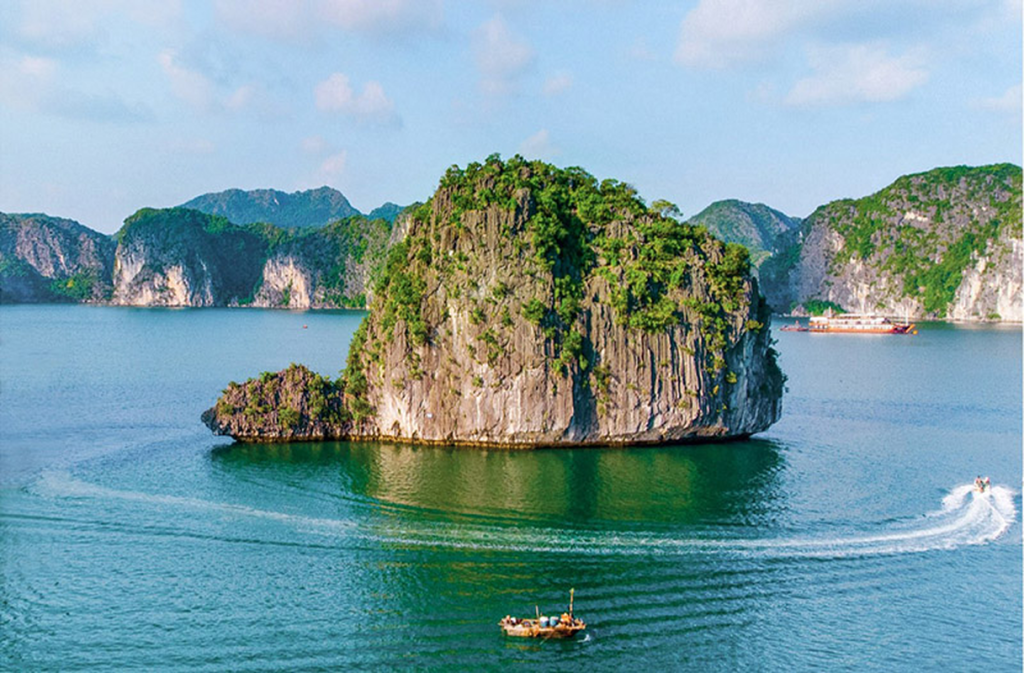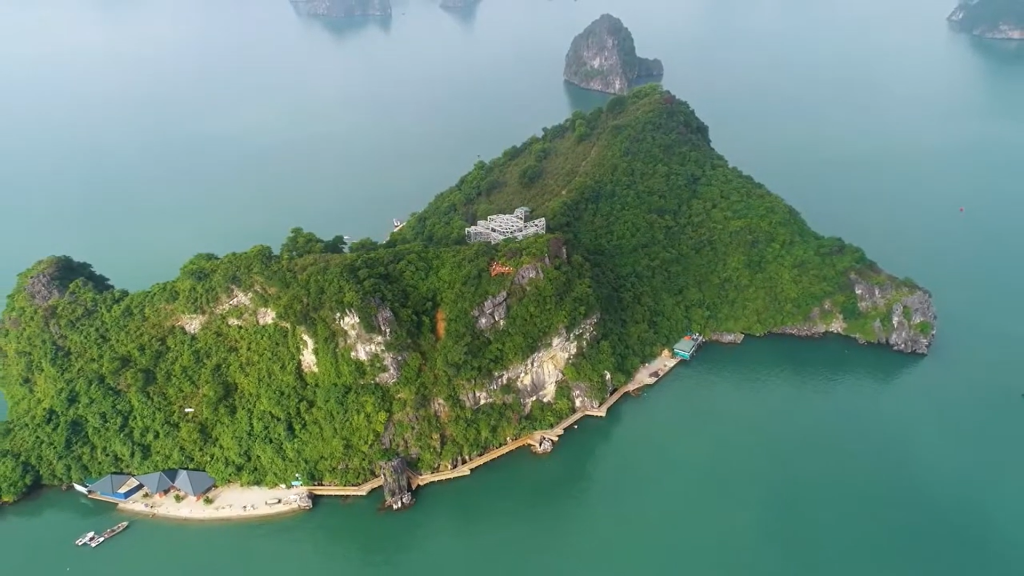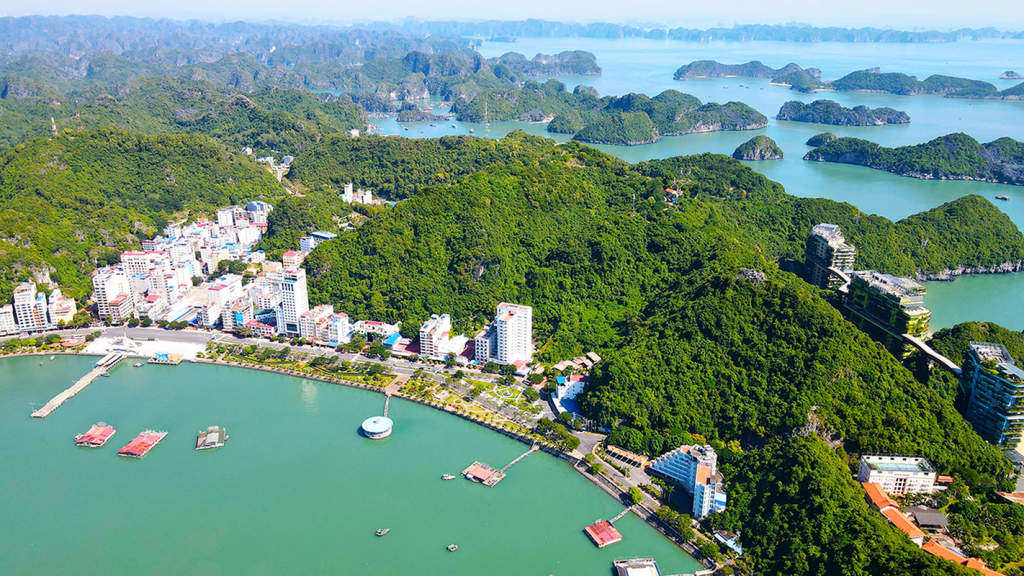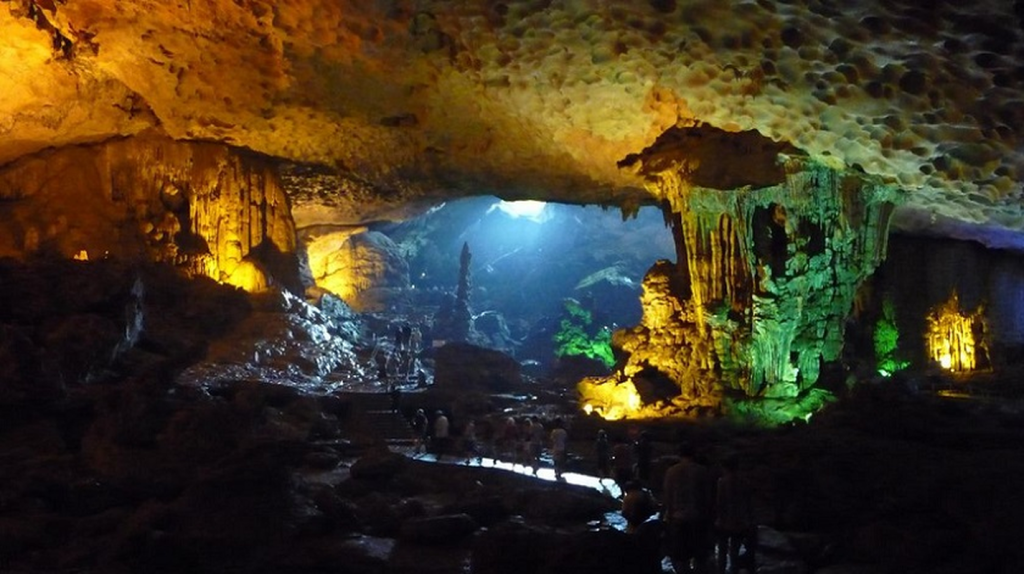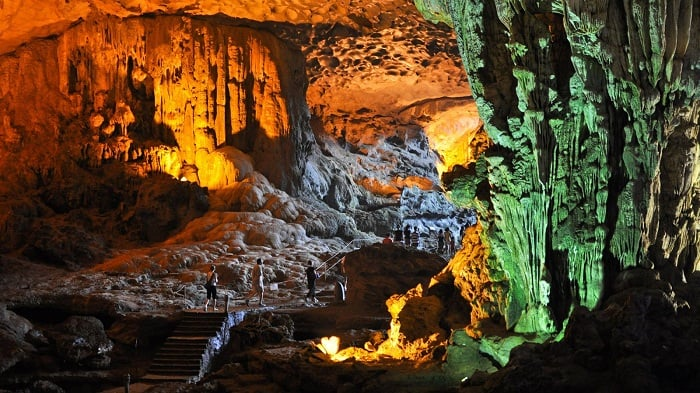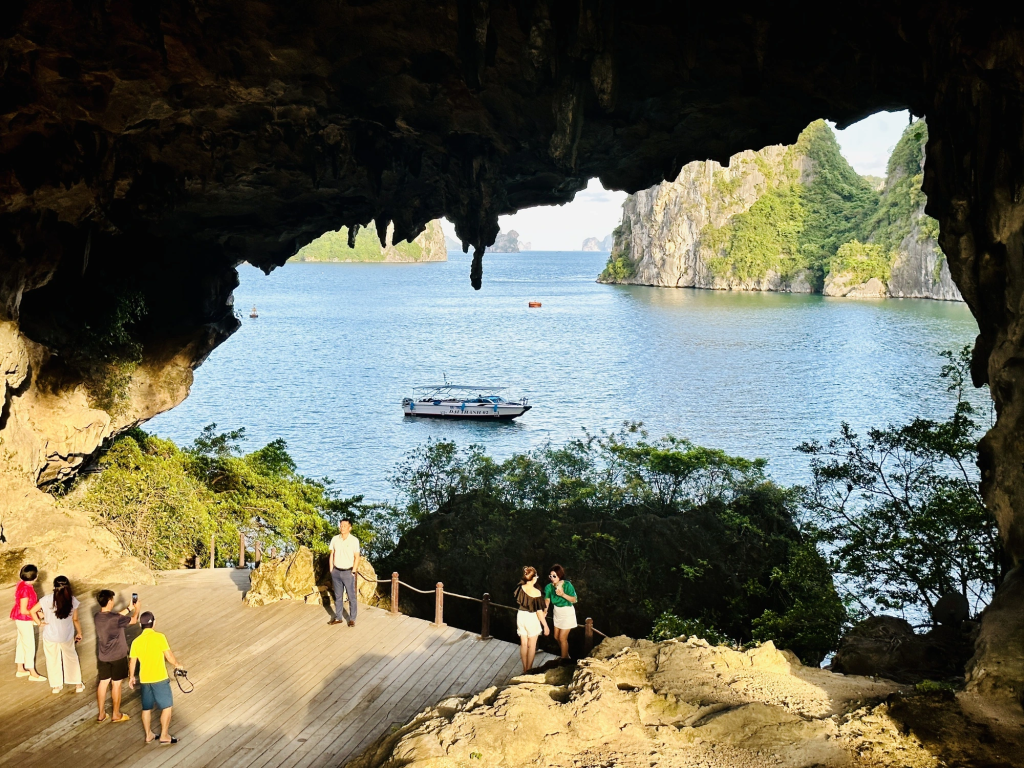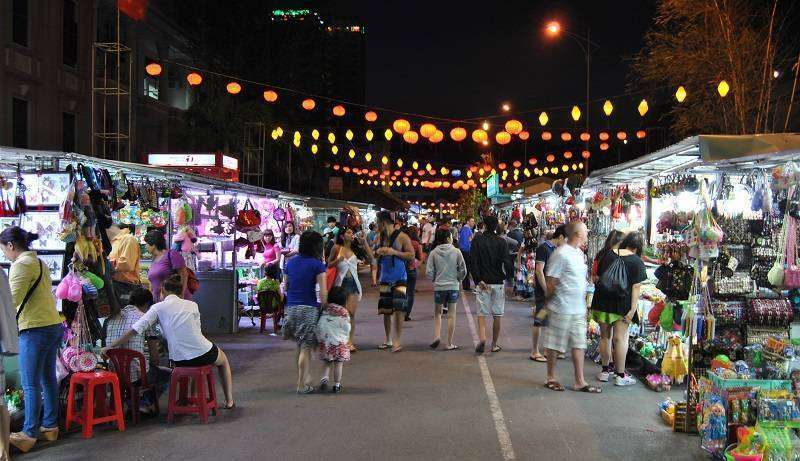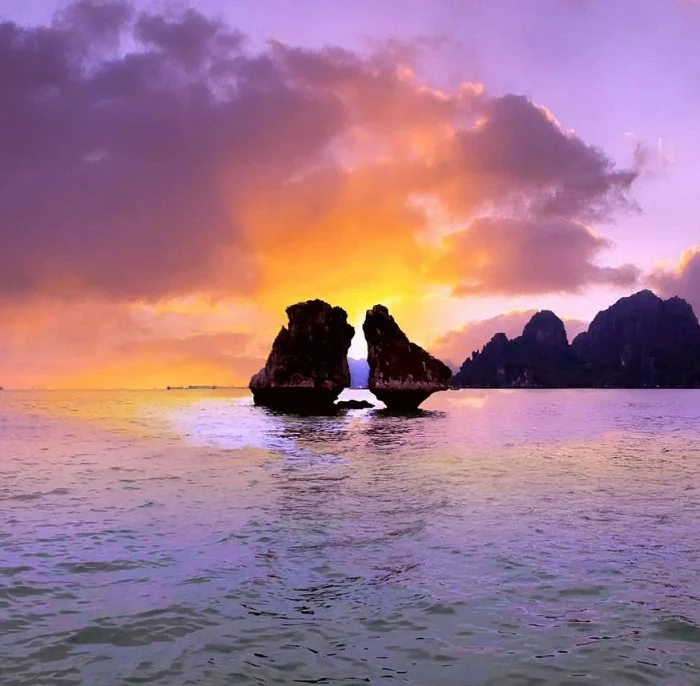Ha long Bay is one of the top destinations that comes to mind when travelers think of Vietnam. Located in the Gulf of Tonkin, northeastern Vietnam, Halong Bay is approximately 165 km from Hanoi and is part of Quang Ninh Province, covering an area of 1,553 km².

Ha Long City Quang Ninh Province
The region is composed of three major areas: Halong Bay in the center, Bai Tu Long Bay to the northeast, and Cat Ba Island with Lan Ha Bay to the southwest. While Bai Tu Long Bay also belongs to Quang Ninh, Lan Ha Bay is under Hai Phong City. These three bays share similar limestone island formations, but Halong Bay is the most popular due to its UNESCO World Heritage recognition. Bai Tu Long and Lan Ha Bay, on the other hand, offer more pristine and secluded landscapes, appealing to travelers seeking tranquility.
The Origin of the Name Ha Long
The name “Ha Long” translates to “Descending Dragon” in Vietnamese. Before the 19th century, this name did not appear in any official records or documents. The area now known as Ha Long Bay was previously referred to by several names, such as Giao Chau, Luc Thuy, An Bang, An Quang, and others. It wasn’t until the late 19th century that “Ha Long Bay” started appearing on French charts of the Tonkin Gulf. The inspiration behind the name came from a report in the French “Haiphong News” that described sightings of giant sea creatures resembling dragons in the bay in 1898. This led the Europeans to associate the bay with the dragons of Asian mythology, giving birth to the name “Ha Long Bay.”
The Legend of the Descending Dragon
Legend plays a significant role in Ha Long Bay’s cultural identity. According to Vietnamese folklore, the Viet people are descendants of a Fairy and a Dragon. As the story goes, when invaders threatened the newly formed Vietnamese kingdom, the Jade Emperor sent Mother Dragon and her children to assist in defending the land. The dragons descended from the heavens and spat out pearls, which turned into thousands of islands and islets that formed an impenetrable barrier. The invaders’ ships crashed into these islands and were destroyed. After the victory, the dragons chose to stay on Earth, with Mother Dragon settling in Ha Long Bay and the children in Bai Tu Long Bay. The movements of the dragons’ tails are said to have formed the nearby Tra Co Peninsula.
Ha Long Bay’s Titles and Recognitions
Ha Long Bay has been honored with several prestigious titles over the years, celebrating both its natural beauty and its cultural significance. In 1962, the bay was recognized as a Renowned National Landscape Monument by the Vietnamese Ministry of Culture. In 2009, it was designated a Special National Monument. The bay’s international recognition came in 1994 when UNESCO first inscribed Ha Long Bay as a World Natural Heritage Site for its exceptional aesthetic value. This was followed by a second recognition in 2000, this time for the bay’s geological and geomorphological importance.
Ha Long Bay is also a member of the Club of the Most Beautiful Bays in the World, earning this distinction in 2003. Additionally, in 2012, the New Open World organization awarded Ha Long Bay the title of World New Natural Wonder.

Ha Long bay
Geographical and Natural Features
Ha Long Bay is located in the northeastern part of Vietnam, within Quang Ninh Province, and covers an area of approximately 1,553 km², including around 1,969 islands. The nominated area for UNESCO’s World Heritage List comprises 434 km² and 775 islands. This region is famous for its unique limestone islands, beautiful caves, and pristine beaches, making it a top tourist destination.
The bay’s landscape is characterized by steep, rocky islands, mixed with calm lagoons and mangroves. The water depth averages between 5 and 10 meters, with some channels reaching up to 29 meters. Ha Long Bay enjoys a tropical climate, with distinct seasons that make it ideal for year-round visits. Its waters are calm, with small tidal variations, allowing for safe exploration.

Ha Long Bay Map – Top Destinations
Tourism and Activities in Ha Long Bay
Ha Long Bay offers diverse tourist activities, ranging from sightseeing cruises to adventure sports. Visitors can embark on boats to explore the bay’s emerald waters, limestone islands, and caves. Cultural tourism allows tourists to visit archaeological sites that provide insight into ancient Vietnamese life. Ecotourism opportunities abound, with activities such as kayaking, bamboo boat tours through submerged caves, and hikes to experience the bay’s rich biodiversity.

Ha Long Bay Festival
Adventure enthusiasts can enjoy thrilling water sports such as jet skiing, banana boating, and mountain climbing. Ha Long Bay also offers unique experiences like staying overnight on luxury cruises, providing opportunities to admire the sunrise and sunset over the bay’s calm waters.
In addition to natural beauty, Ha Long Bay is famous for its pearl farming industry. Visitors can tour the farms and purchase beautiful pearls as souvenirs. The region’s international appeal is highlighted by frequent visits from luxury cruise lines, contributing to its status as a premier global destination.

Ha Long Bay 2
When to Visit
Halong Bay experiences a humid tropical climate typical of northern Vietnam, with four distinct seasons:
- Spring (March – May)
- Summer (June – September)
- Autumn (October – December)
- Winter (January – February)
The best times to visit are between March – April and October – November, when the weather is mild, rainfall is low, and outdoor activities are ideal. However, Halong Bay offers something unique in every season, so it’s a year-round destination. Always check the weather forecast close to your travel date for the most accurate conditions.
How to Get There
To reach Ha long Bay, you can fly into one of three airports:
- Van Don (Quang Ninh) – 1 to 1.5 hours from the cruise port.
- Cat Bi (Hai Phong) – 1 to 1.5 hours from the cruise port.
- Noi Bai (Hanoi) – About 2.5 hours from Halong.
If you’re coming from Hanoi or other nearby destinations like Ninh Binh or Sapa, you can take a limousine bus, taxi, or private car. Many cruise operators offer transfer services, with a limousine bus costing around $30-$40 per person for a round trip from Hanoi.
Where to Stay
Halong offers a wide range of accommodations, from luxury resorts and hotels to budget-friendly homestays and hostels. For the full experience, consider staying on an overnight cruise. Cruises range from 3-star to 5-star options and offer various itineraries through Halong, Lan Ha, and Bai Tu Long Bay.
If you’d prefer to stay on land, the most convenient areas are Ha long City and Bai Chay, close to the two main cruise ports: Tuan Chau Port and Ha long International Cruise Port.
Top Attractions
Although Ha long, Bai Tu Long, and Lan Ha Bay share similar landscapes, Halong Bay boasts more developed tourist attractions:
- Sung Sot Cave (largest cave in Halong Bay)
- Titop Island (panoramic views)
- Luon Cave (an underwater cave)
- Cua Van Fishing Village
- Tung Sau Pearl Farm
For a quieter experience, Lan Ha and Bai Tu Long Bay offer stunning but less-crowded spots such as Thien Canh Son Cave, Vung Vieng Fishing Village, and Ba Ham Lake.
Things to Do
- Kayaking: Explore the bay’s limestone islands and emerald waters.
- Swimming: Best from April to October when the sea temperature is perfect.
- Sunbathing: Enjoy the sandy beaches in Lan Ha and Bai Tu Long.
- Hiking: Discover caves with incredible stalactite formations.
- Cycling: Ride through rustic villages on Cat Ba Island.
- Cooking Class: Learn how to cook traditional Vietnamese dishes.
- Tai Chi: Start your morning with a peaceful Tai Chi session on the deck.
- Squid Fishing: Try your hand at night squid fishing after dinner.

Ha Long Bay Guest
What to Bring
- Sunblock, a wide-brim hat, and sunglasses
- Camera for capturing the stunning scenery
- Insect repellent
- Proper shoes for hiking
- Flip-flops for beach activities
- Swimwear for summer
- Warm clothes if visiting in winter
- Passport (needed for cruise boarding)
Visa Information
Most nationalities need a visa to enter Vietnam, except for some Southeast Asian countries and a few others. Check if your country is exempt, or apply for an e-visa through the official Vietnam Immigration Department website.
Currency
The official currency is Vietnamese Dong (VND). Although credit cards and ATMs are widely accepted, it’s a good idea to carry cash, especially if you plan to tip or make small purchases.
Local Tips for Booking
- Book in Advance: Especially during peak seasons to get better cruise options.
- Overnight Cruises: If you have the time, an overnight cruise offers a richer experience than a day trip.
- Weather Check: Always check the weather, especially if traveling during storm season.
- Look for Promotions: Many cruises offer discounts during the low season from May to September. Booking through a trusted travel agent can help you find the best deals.

